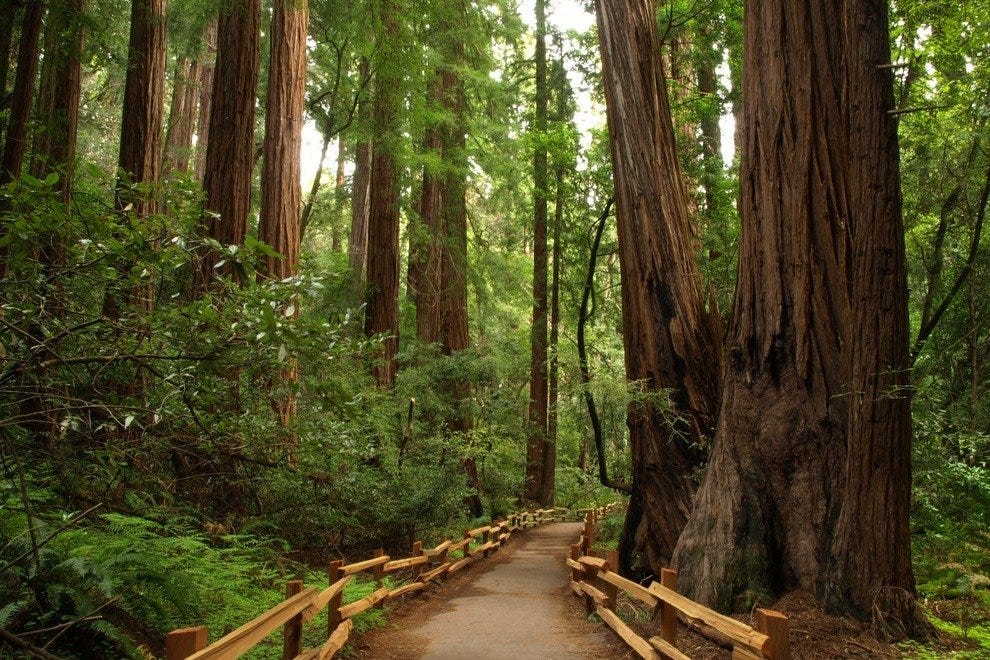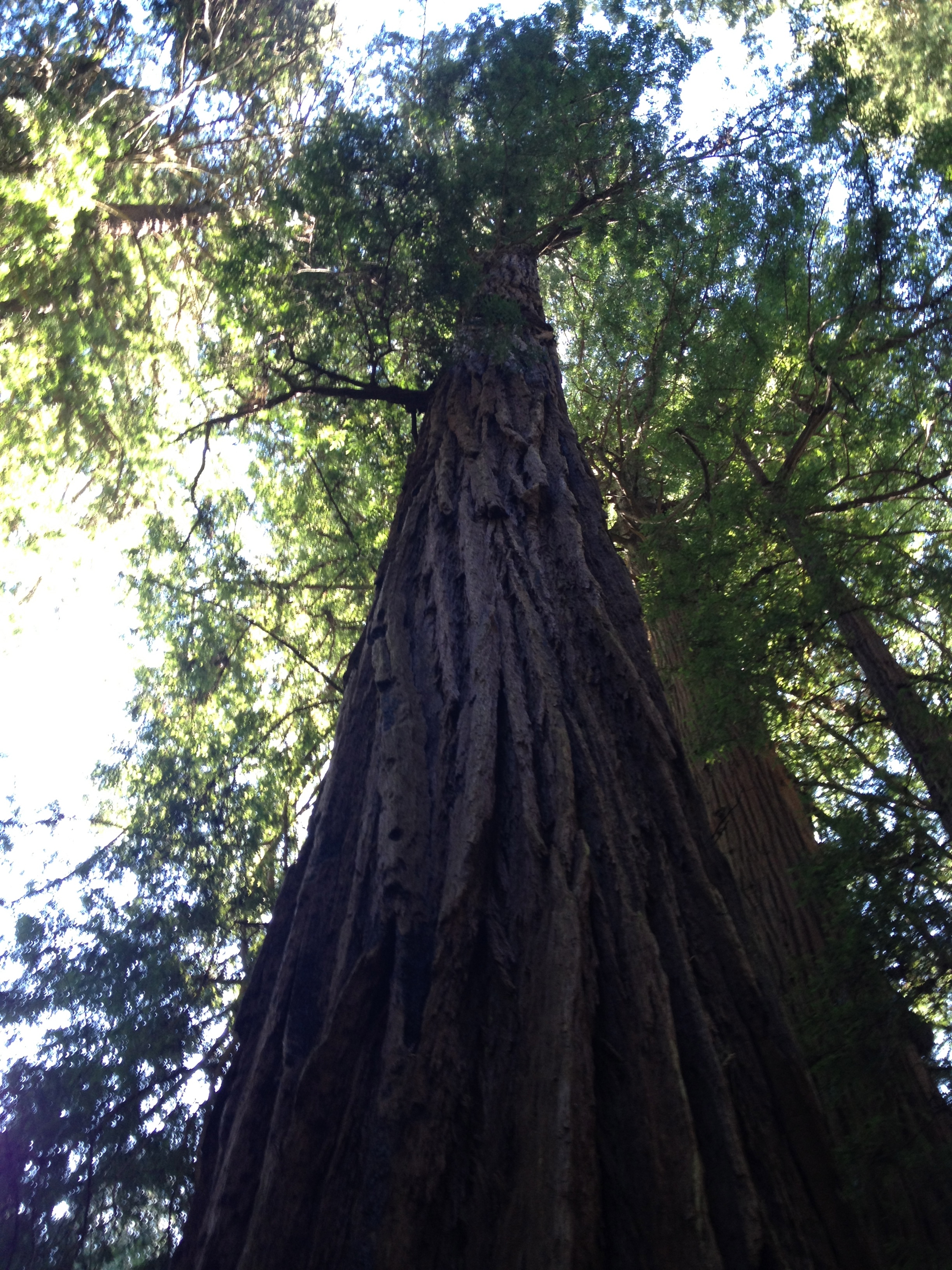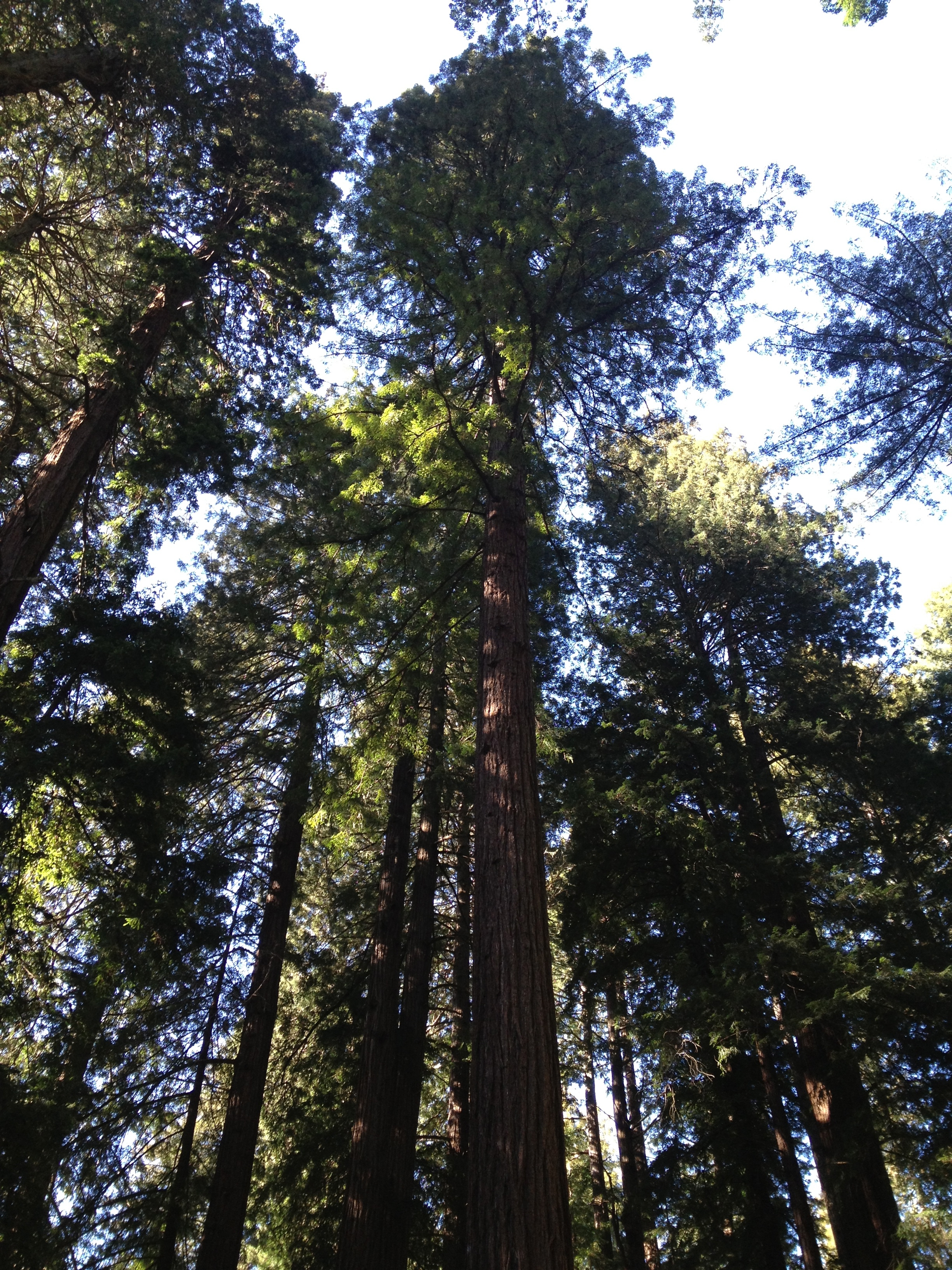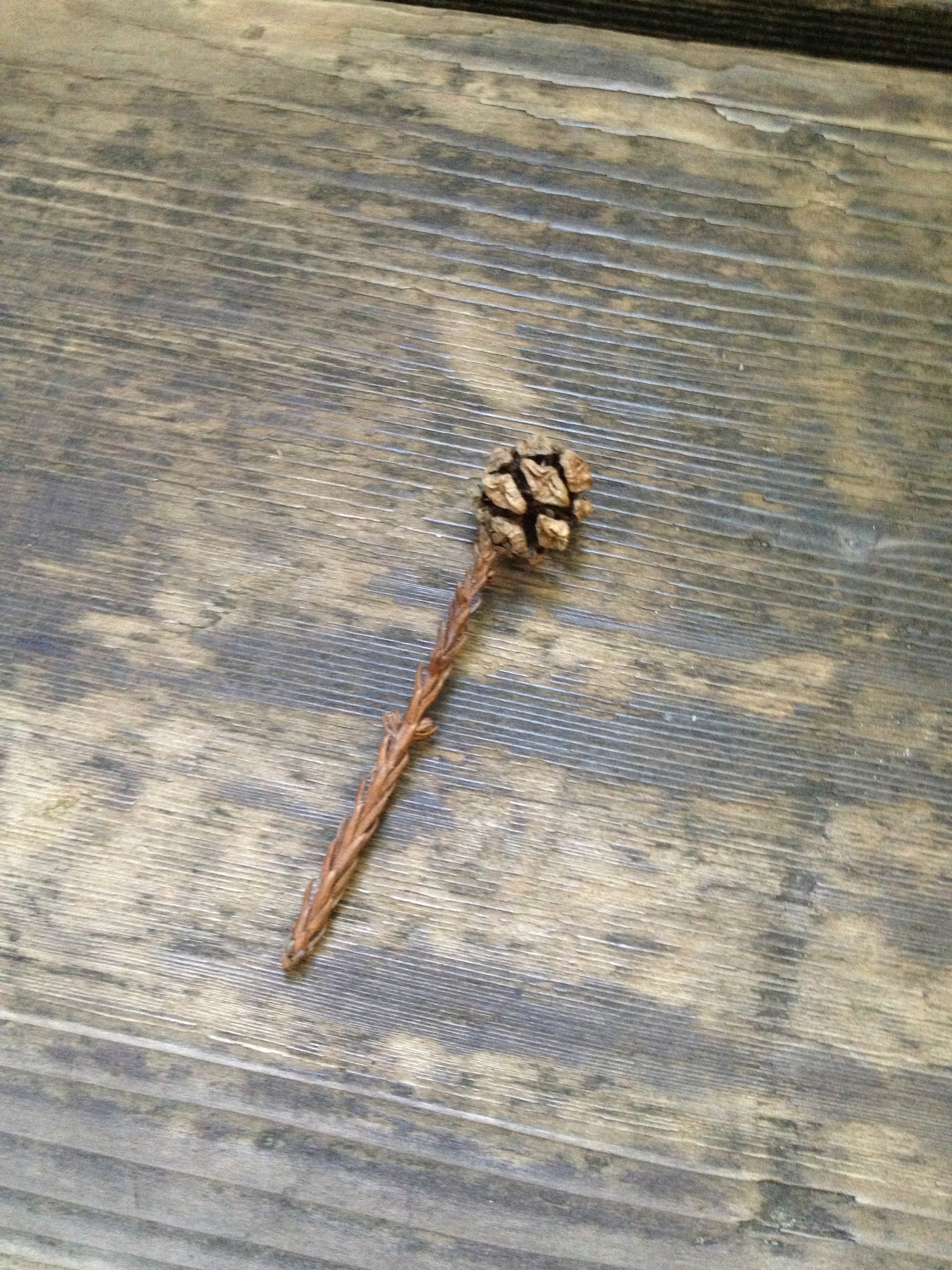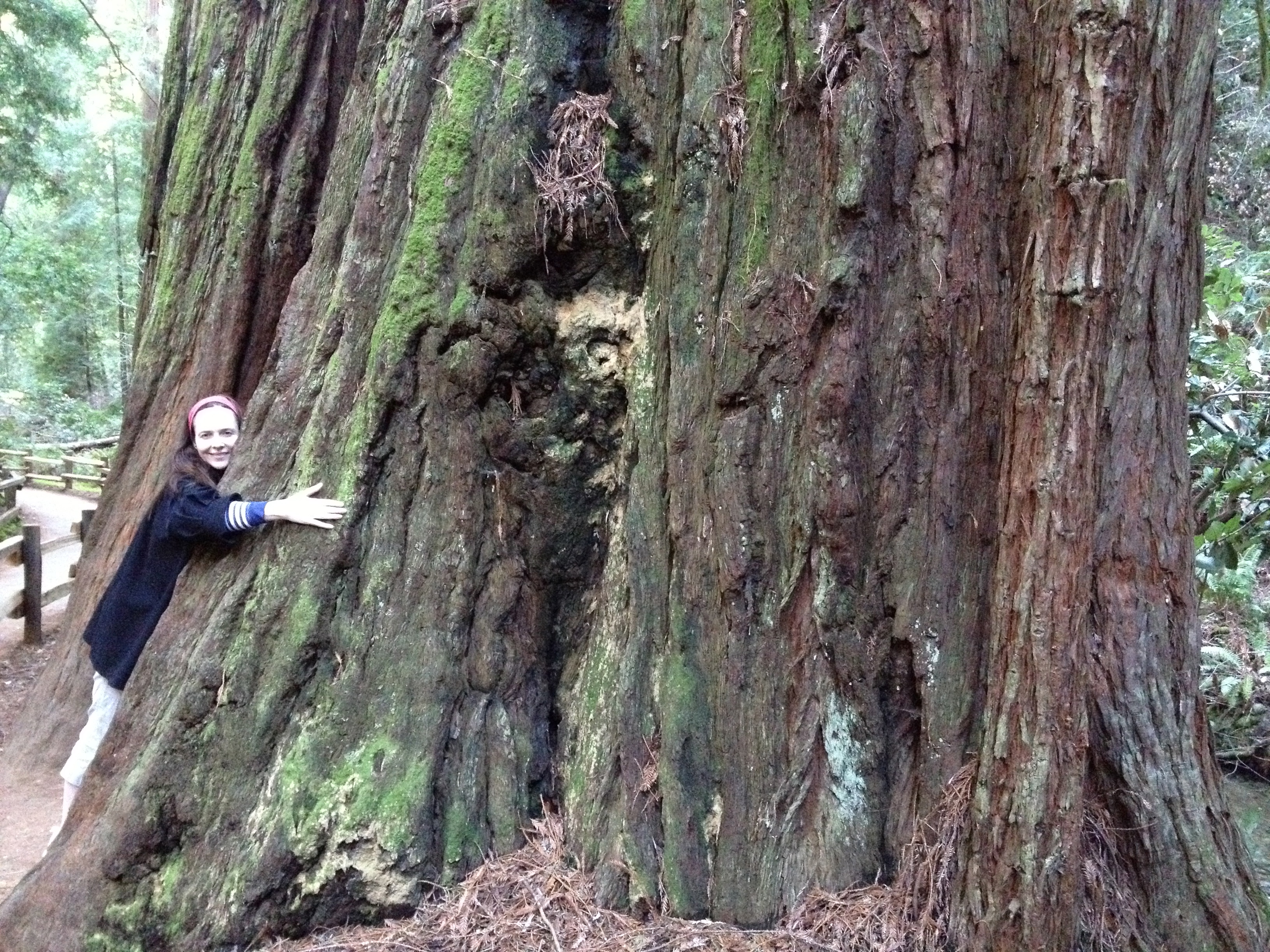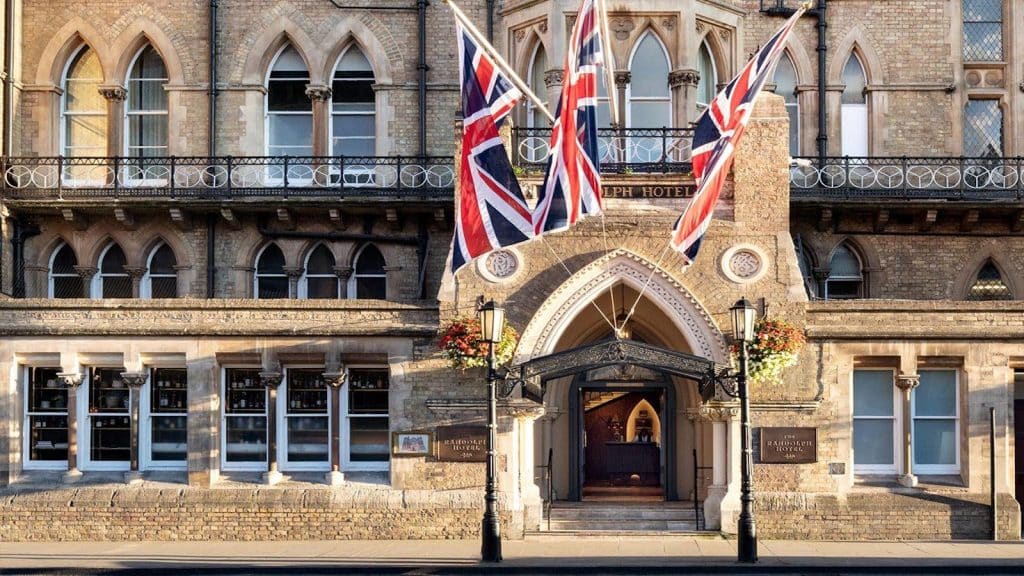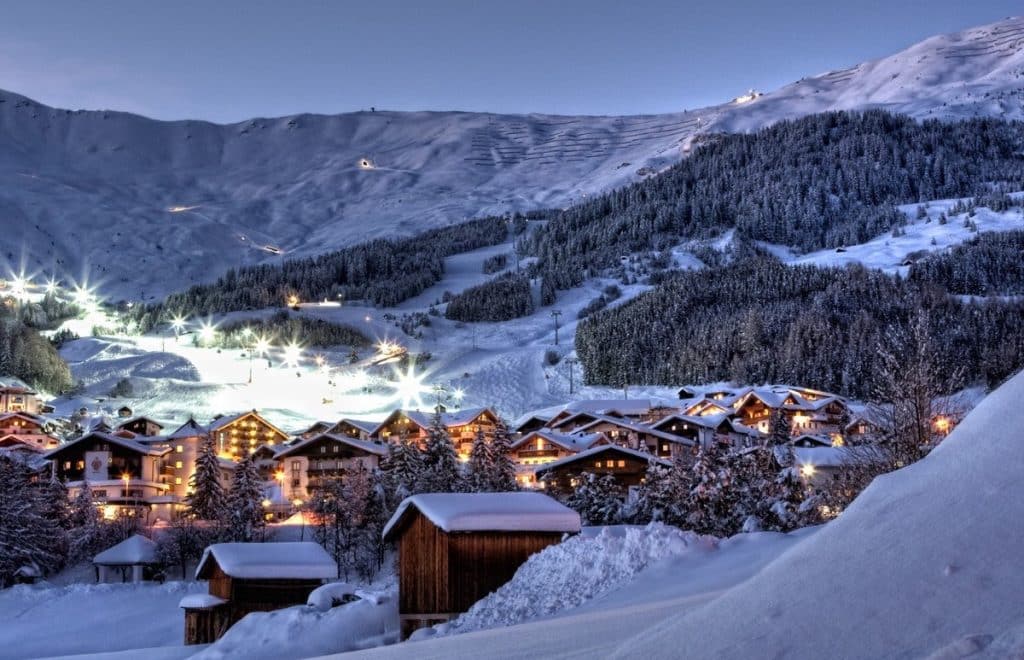Muir Woods is a remnant of ancient coast redwood forests that blanketed many northern California coastal valleys. Located just 11 miles north of the Golden Gate Bridge, a visit to this enchanted forest is a blissful way to spend a couple of hours. In 1905, a local businessman, William Kent, bought land in this valley to protect one of the last stands of uncut redwoods. To ensure permanent protection, he donated 295 acres of redwoods to the federal government, resulting in President Roosevelt proclaiming the area a national monument in 1908.
There are two species of redwood in California: the coast redwood – found in Muir Woods – grows on a 500-mile strip of Pacific coast from southern Oregon to Big Sur. Closely related are the giant sequoia – bulkier, but not as tall; these can be seen in Yosemite.
The coast redwood are the tallest living things. The tallest tree here is over 252 feet and the widest over 14 feet. Most mature trees are 500 – 800 years old, but some redwoods are more than 1,000 years old.
The coast redwoods grow best in moderate temperatures, protected from the wind and salt spray. They need substantial soil moisture from rainfall and summer fog, growing tallest on the plains that flood periodically.
Its spongy and fibrous bark – from six to 12 inches thick – insulates the mature redwood against fire damage. The trees get their colour, and name, from the reddish-brown, bitter chemical tannin. The tannin makes both bark and wood resistant to fire, and to attack by insects and fungi.
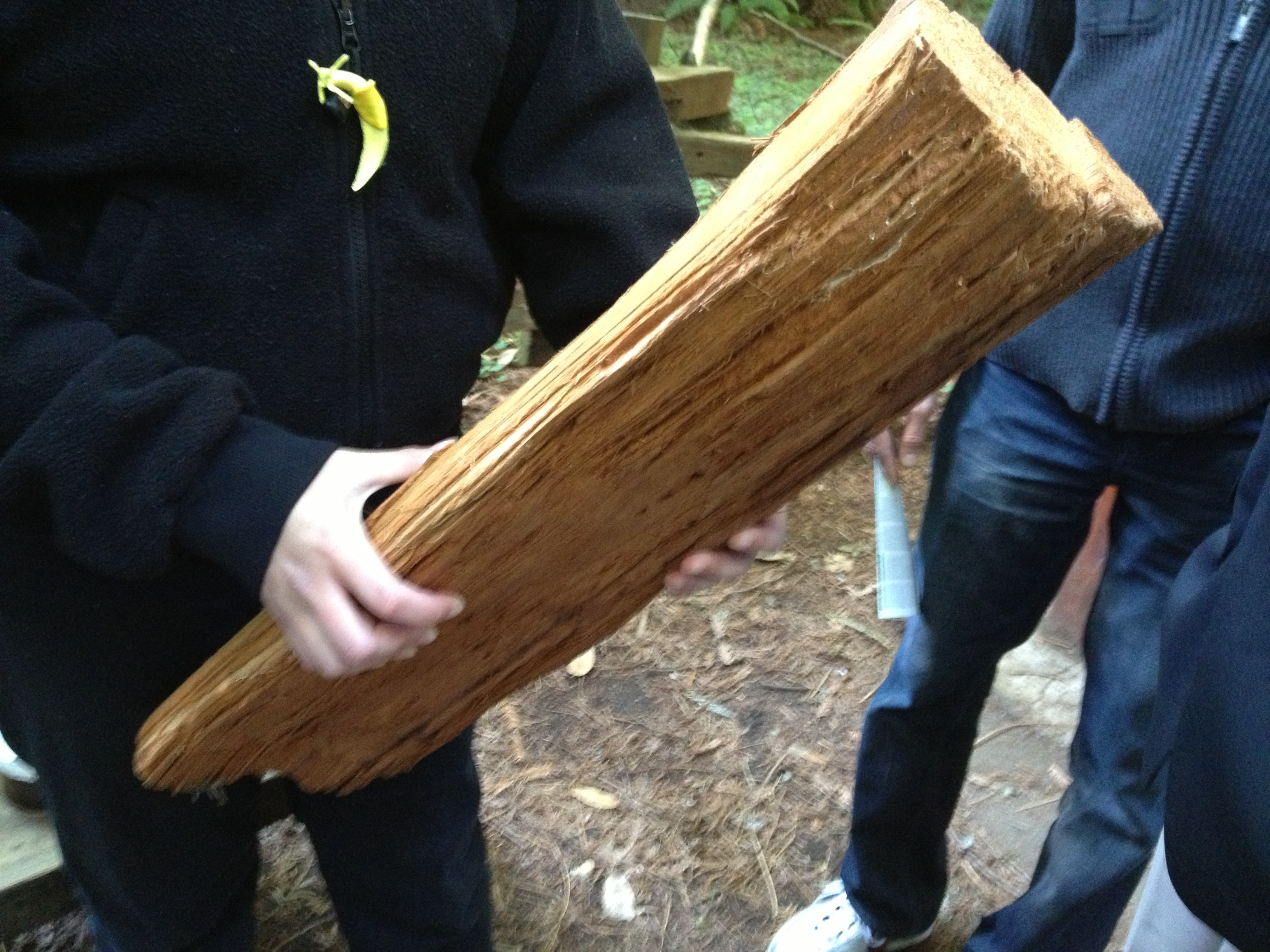
Muir Woods is part of Golden Gate International Biosphere Reserve – one of the planet’s richest and most threatened reservoirs of plant and animal life. Each year, nearly one million visitors from around the world visit, and in doing so, help preserve this wondrous ecological treasure for all.
For further information please visit: http://www.nps.gov/muwo/index.htm
All images by CELLOPHANELAND*.




